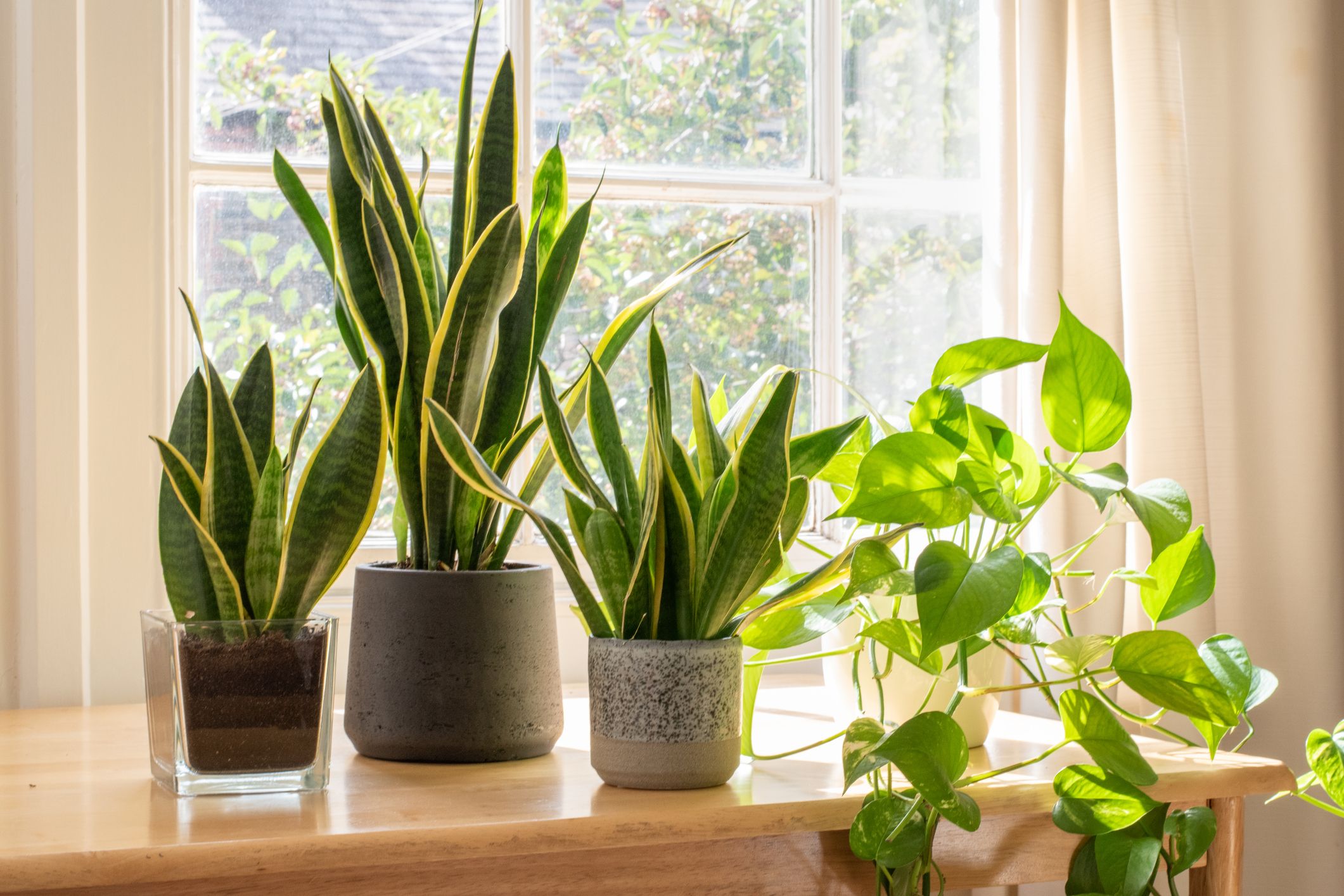Did you know that houseplants help purify the air in our homes? We’ve long known that indoor plants improve our mood and reduce stress levels, but improving air quality is an additional benefit! See the best air-purifying plants.

Most Air Purifying Plants For Your Home
BARBERTON DAISY
As well as injecting a cheerful burst of red, yellow, orange or pink into your home, the Barberton daisy is an effective cleanser of the toxins formaldehyde, trichloroethylene, and benzene, found in a range of household materials from paints to synthetic fibres.
Care advice: Place the plant in a room with plenty of natural light and keep the soil moist but well-drained.
ENGLISH IVY
This easy-growing perennial vine is particularly effective at reducing airborne faecal particles which makes it the perfect air purifying plant for your bathroom or en suite. In addition, studies have shown that the ivy can also help combat mould levels in the home.
Care advice: Provide your English ivy with generous watering and four hours of direct sunlight a day, and it will return the love to you with clean, detoxified air.
SNAKE PLANT OR MOTHER-IN-LAW’S TONGUE
With this plant in your bedroom, you’re in for a great night’s sleep. Also known as Mother-in-Law’s Tongue, this yellow-tipped succulent releases oxygen at night, helping you to breathe better while sleeping. It is one of the best plants for filtering the air of formaldehyde, xylene, benzene, toluene, and trichloroethylene.
Care advice: Be mindful not to overwater, as the roots are prone to rot in moist soil.
CHRYSANTHEMUM
Brighten up your kitchen or living room with a chrysanthemum. These pretty blooms help to filter out a host of toxins including ammonia and benzene, which is often found in plastics, detergents, and glue.
Care advice: This plant loves sunlight, so place it in a spot near a sunbathed window.
SPIDER PLANT
For those of you who are houseplant newbies, the resilient spider plant is the perfect choice. It will quietly battle toxins including carbon monoxide and xylene, a solvent used in the printing and rubber industries. If you have pets, this is one of the few houseplants that is non-toxic to animals.
Care advice: You can also repot the tiny ‘spiderettes’ and grow a whole family of plants that will pretty much take care of themselves… and you.
ALOE VERA
A healing aloe plant is added purifying plants group that have a lovely addition to your kitchen windowsill, as it loves a sunny spot. While being on hand to soothe any kitchen burns, this succulent will be purifying the air of formaldehyde and benzene, found in varnishes, floor finishes, and detergents.
Care advice: This plant will thrive in a sunny location.
BROAD LADY PALM
This is one of the few plants that can help reduce levels of ammonia that can be found in a range of cleaning products. They are expensive to buy fully-grown so you might want to shop around for a smaller one or start from seed.
Care advice: Humidity-loving, this plant will be very happy in your bathroom.
RED-EDGED DRACAENA OR DRAGON TREE
Trichloroethylene and xylene are amongst the pollutants fought by this spiky, slow-growing plant. The leaves have a bright red trim which add a flash of colour to your home.
Care advice: This plant has the potential to grow to 8ft, so keep it in a room with high ceilings and reasonable sunlight.


